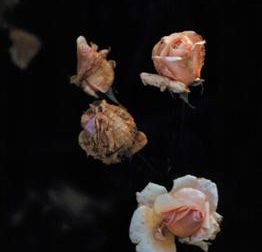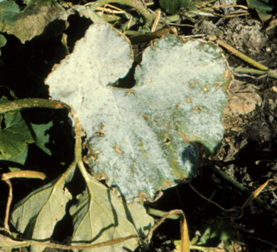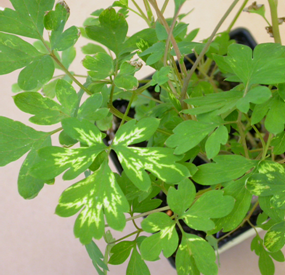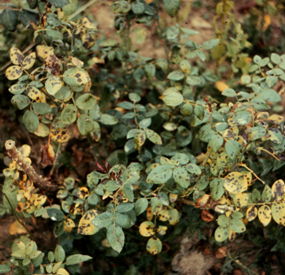
Jeffory Schraufnagel*, Milwaukee Area Technical College, Brian Hudelson, UW-Madison Plant Pathology
Revised: 5/11/2010
Item number: XHT1122
What is gray mold? Gray mold (or Botrytis blight) is a common and often serious fungal disease that can affect plants of all kinds. Gray mold is a particularly serious problem on flowering plants and those plants grown in greenhouses.
What does gray mold look like? Gray mold causes brown spots on petals that enlarge, killing the petals, and eventually the rest of the flower. Early infections may prevent flowers from opening. On plants such as tulips, crocus, and daffodils, gray mold may spread from flowers into the bulbs leading to bulb decay. On leaves, Botrytis causes irregularly-shaped necrotic (dead) areas that may have a bull’s-eye pattern. Botrytis can also cause stem cankers (localized sunken areas) that may eventually enlarge to girdle the stem.
Where does gray mold come from? Gray mold is caused by the fungus Botrytis cinerea, which survives on dead plant tissue as dark brown to black, multi-celled structures called sclerotia, and as thick, dark-walled, single-celled spores called chlamydospores. Botrytis produces large numbers of dusty, gray reproductive spores that are spread by wind or splashing water. Botrytis spores rapidly die when dried, and most readily infect delicate tissues such as petals. In order to infect tough tissues such as healthy leaves, Botrytis spores require an external food source such as nutrients leaking from wounds or dying tissues such as old flower petals.
How do I save a plant with gray mold? Promptly remove diseased leaves and flowers. Prune diseased branches four to six inches below the infection leaving a clean cut. Disinfest pruning tools between cuts by dipping them for at least 30 seconds in a 10% bleach solution or alcohol (spray disinfectants that contain at least 70% alcohol can also be used).
How do I avoid problems with gray mold in the future? Remove dead or dying tissue from plants and the soil surface. Avoid wounding plants mechanically, or chemically by overfertilization or misuse of pesticide sprays. Reduce humidity around plants and germinate seedlings under warm, relatively dry conditions. Fungicides such as chlorothalonil, iprodione and mancozeb can be used to prevent infections. However, Botrytis may develop resistance to these products (particularly iprodione). Be sure to read and follow all label instructions of the fungicide that you select to insure that you use the fungicide in the safest and most effective manner possible.
*Completed as partial fulfillment of the requirements for an associate degree in Horticulture at the Milwaukee Area Technical College
Download Article





 Powdery Mildew (Vegetables)
Powdery Mildew (Vegetables) Tobacco Rattle
Tobacco Rattle Black Spot
Black Spot Rose Rust
Rose Rust


